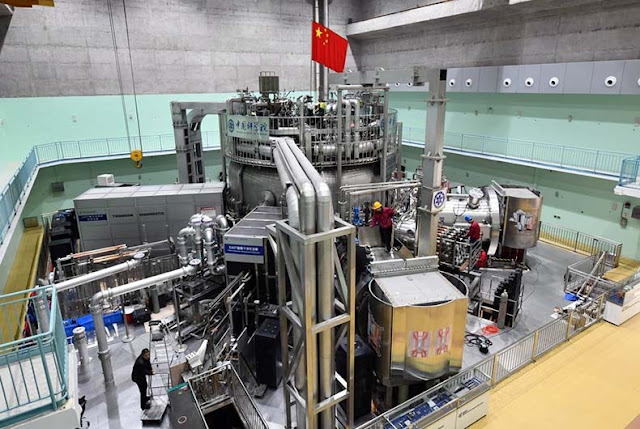China is building a mini-star on Earth and stock it in a
reactor. Many teams across the Earth have this same daring goal — which would
create limitless clean energy via nuclear fusion.
But according to Chinese state media, New Atlas reports, the
scientists at the Experimental Advanced Superconducting Tokamak (EAST) has set
a new world record: temperatures of 120 million degrees Celsius for about 101
seconds.
Yep, that’s hot. So what? Nuclear fusion reactions involve a
ridiculous amount of heat and pressure — a temperature and pressure environment
like to the sun.
If researchers can really build a sun on Earth, they can generate
endless energy by simulating how the sun does it. In nuclear fusion, the immense
heat and pressure create a plasma. Then, within that plasma, two or more
hydrogen nuclei collide together, fuse into a heavier atom, and release a ton
of energy in the process.
According to New Atlas, in 2016, the researchers at EAST
could heat hydrogen plasma to approximately 50 million degrees C for 102
seconds. Two years later, they achieved 100 million degrees for 10 seconds.
The temperatures are remarkable, but the short reaction
times, and lack of pressure are another problem. Fusion is simple for the sun,
because stars are enormous and gravity delivers even pressure all over the
surface. The pressure crushes hydrogen gas in the sun’s core so massively that
several nuclei combine to form one atom, discharging energy.
But on Earth, we have to provide all of the pressure to keep
the reaction going, and it has to be flawlessly even. It’s tough to do this for
any length of time, and it uses a ton of energy. So the reactions usually vanish
in minutes or seconds.
Still, the up-to-date record of 120 million degrees and 101
seconds is one more step toward sustaining longer and hotter reactions.





0 Comments